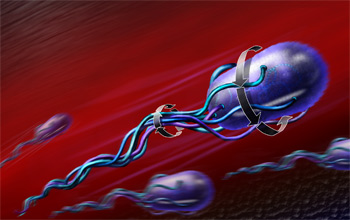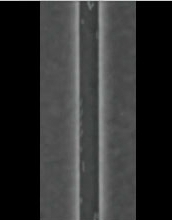All Images
News Release 05-109
Bacteria Take the Path of Least Resistance
Findings may lead to new nano-devices and understanding of infection
This material is available primarily for archival purposes. Telephone numbers or other contact information may be out of date; please see current contact information at media contacts.

Escherichia coli cells use long, thin structures called flagella to propel themselves. These flagella form bundles that rotate counter-clockwise, creating a torque that causes the bacterium to rotate clockwise.
Credit: Nicolle Rager Fuller, National Science Foundation
Download the high-resolution JPG version of the image. (349 KB)
Use your mouse to right-click (Mac users may need to Ctrl-click) the link above and choose the option that will save the file or target to your computer.

View Video
Real-time video shows Escherichia coli cells swimming in a 10-micron wide, 1.5-micron high solid microchannel with agar floors. Most of the cells are swimming on the right-hand side of the channel as a result of torque produced from the motion of the flagella that propel them.
Credit: Willow DiLuzio, Harvard University


